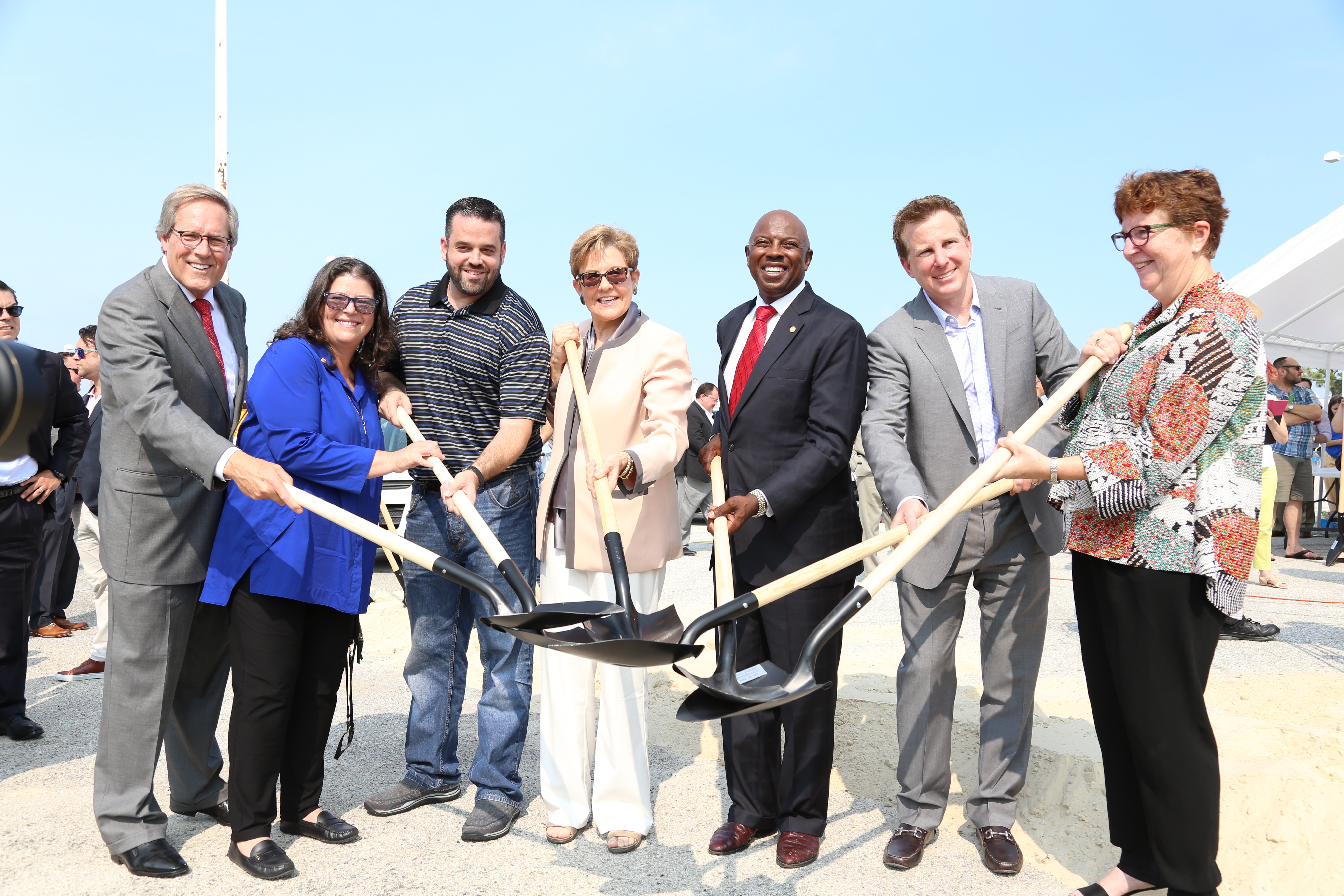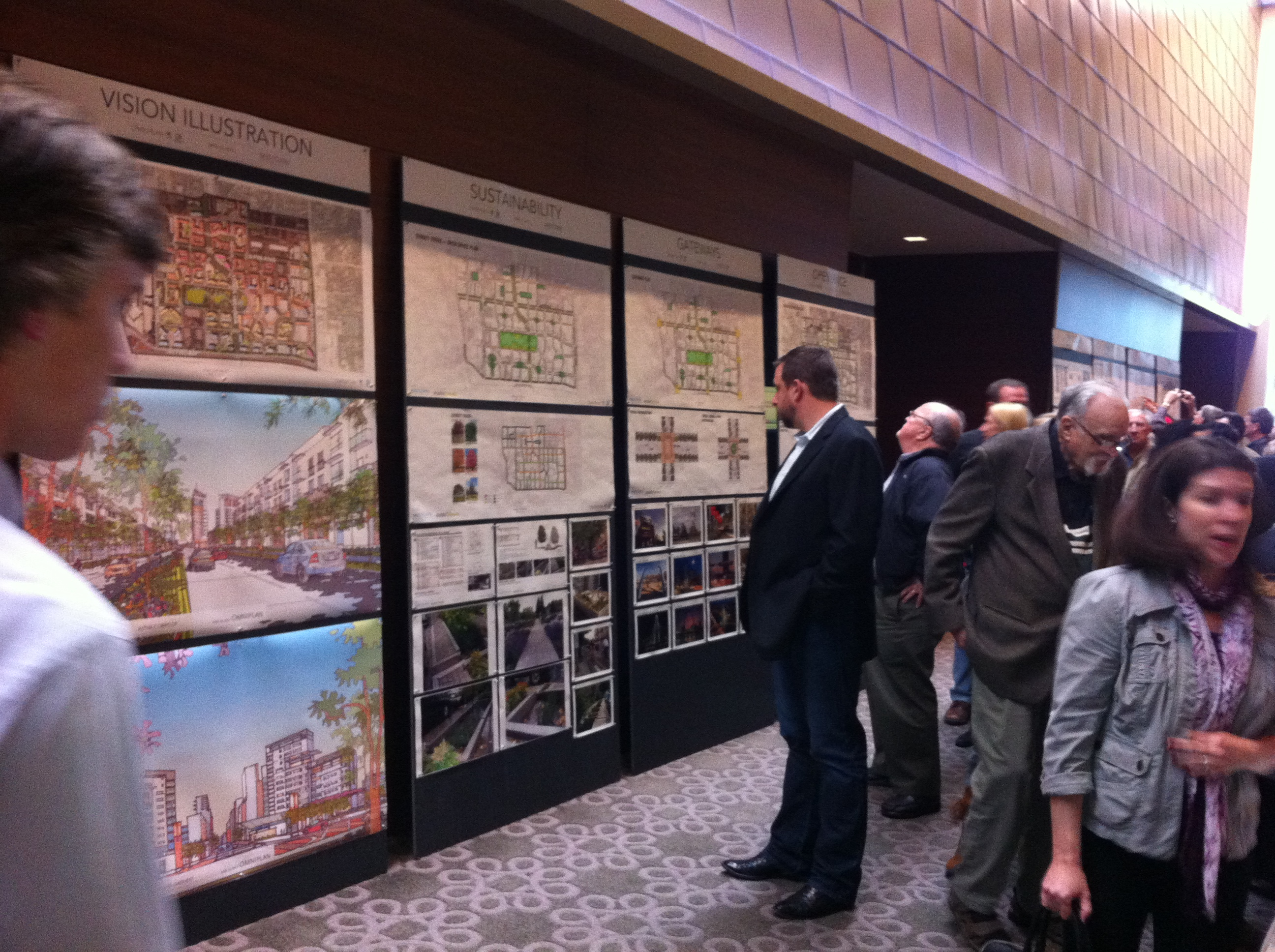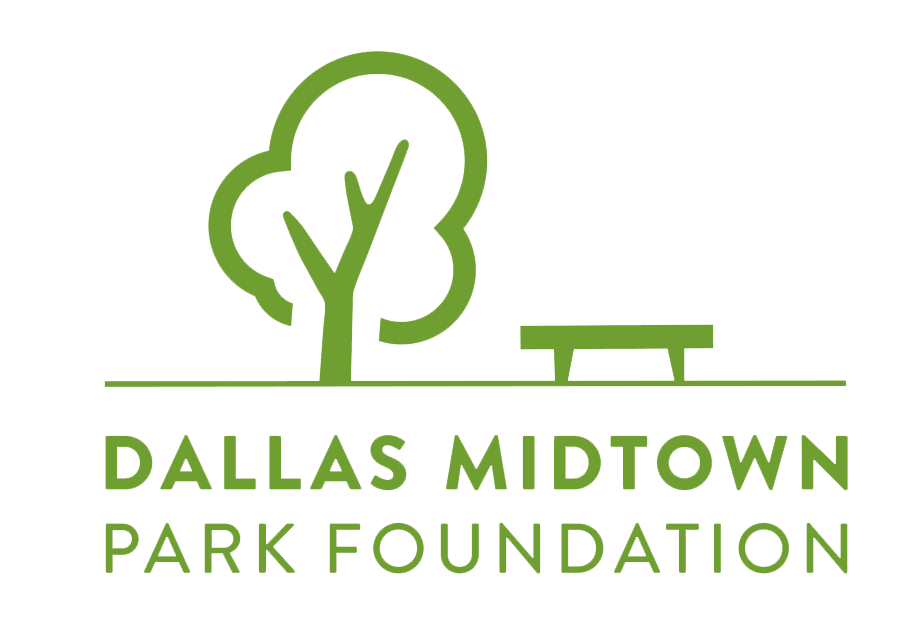

It features a sidewalk cafe, a tree-lined gathering place for students and faculty and a hands-on student laboratory for the construction and display of experimental structures. Architecture and design studios are open to light-filled balcony corridors. The space fosters community as students and faculty crisscross through the space on stairways and bridges. A unifying feature of the design, the central “street,” is an extension of the outdoors and provides a focus for internal activities. The design features two long, four-story structures connected by a full-length clerestoried court.

Co-designed by McCarty Holsaple McCarty’s founder Bruce McCarty and his son Doug McCarty, it was the award-winning submission of a competition of architects from across the state.

In 1993, the original building was rescued from demolition through a significant restoration initiative led by Hart Freeland Roberts, Inc, that also included a new “front-of-house” addition containing a new entrance and lobby, restrooms and a retail space.Īrt + Architecture Building: The University of Tennessee’s Art + Architecture Building was built in 1981 and is home to the College of Architecture and Design and the College of Arts and Sciences School of Art.

Despite Ryman’s concern with the structure’s exposed brick walls and the simple seating of its unadorned interior, it is those same elements that ironically make the building so beloved today. Thomas Ryman later claimed that his Tabernacle emulated the architecture of the famed Brooklyn Tabernacle of New York City. Thompson’s High Victorian Gothic design called for a structure with large gables, decorative buttressing, lancet windows, a soaring roofline and a limestone foundation. Thompson took Ryman’s dream and made it a tangible part of Nashville’s skyline. Ryman Auditorium: Thomas Ryman’s dream of a religious center for the people of Nashville was realized in 1892 with the opening of the Union Gospel Tabernacle, now known as Ryman Auditorium. In 1986 Union Station re-opened as a luxury hotel, and fall 2016 saw the completion of a $15.5 million renovation, by Edwards and Hotchkiss, preserving the hotel’s grand past in the soaring 65-foot barrel-vaulted ceiling and 100-year-old Tiffany-style stained-glass in the lobby atrium, while newly-transformed luxury accommodations and a new bar and restaurant cater to today’s discerning guest. Fast-forward nearly 100 years and Union Station was in need of some new life and energy. Union Station was a marvel of the (then) modern day, surprising and delighting travelers for decades with ornate wood carvings, sparkling stained glass, beautiful Italian marble and soaring ceilings. Originally built in 1900 by architect Richard Montfort, the building’s Richardsonian Romanesque architecture with its turrets and towers was a testament to American ingenuity and energy. Union Station: Walking through the doors of Nashville’s historic Union Station Hotel is like taking a step back to a time when travel was not a necessity, but a luxury.


 0 kommentar(er)
0 kommentar(er)
